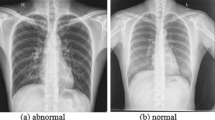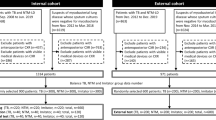Abstract
The airborne disease is a severe disease in the world that spreads exponentially. An Immunochromatography Test(IT) and Biological Aerosol Particles (BAP) test with a disposable instrument that will be recorded in the literature is a standard diagnostic procedure for respiratory infections, such as influenza and TB, in the investigation causes of suspected disease. This examination helps the examiner to identify infectious patients quickly, efficiently, and inexpensively. Self-diagnosis, however, is problematic because it requires a medical specialist to diagnose the diseases in infections. Chest radiography is also not only the primary screening method that is focused on surgical imaging but also diagnostic radiology. Various methods of classification of Tuberculosis are analyzed here. Computer-Assisted Diagnosis (CAD) has become popular, and many researchers are involved in these fields of study. Numerous methods have been suggested for airborne identification and Classification of lung diseases. The medical history of airborne tuberculosis disease in chest X-rays and a review of the different approaches to diagnosing and Classification of the airborne disease are discussed in this article. According to the literature on the relevant policies, items in this research field have been surveyed until 2020.







Similar content being viewed by others
References
Singh J, Tripathy A, Garg P, Kumar AJPCS Lung tuberculosis detection using anti-aliased convolutional networks 2020; 173:281–290.
Chandra TB, et al. Coronavirus disease (COVID-19) detection in Chest X-Ray images using majority voting based classifier ensemble. Expert Syst Appl. 2021;165:113909. https://doi.org/10.1016/j.eswa.2020.113909.
Núñez-Fernández D, Ballan L, Jiménez-Avalos G, Coronel J, Zimic MJAPA Using capsule neural network to predict tuberculosis in lens-free microscopic images. 2020. arXiv: 2007.02457.
Du D, et al. Integration of PET/CT radiomics and semantic features for differentiation between active pulmonary tuberculosis and lung cancer. Mol Imaging Biol. 2021;23(2):287–98. https://doi.org/10.1007/s11307-020-01550-4 (Epub 2020 Oct 8).
Chan Y-H, Zeng Y-Z, Wu H-C, Wu M-C, Sun H-MJJOHE Effective pneumothorax detection for chest X-ray images using local binary pattern and support vector machine. 2018.
Jaeger S et al. Detecting drug-resistant tuberculosis in chest radiographs. 2018;13(12):1915–1925.
Gaeckle NT et al. Aerosol generation from the respiratory tract with various modes of oxygen delivery. 2020;202(8):1115–1124.
Patterson B et al. Bioaerosol sampling of patients with suspected pulmonary tuberculosis: a study protocol. 2020;20(1):1–7.
de Sousa NR et al. A fieldable electrostatic air sampler enabling tuberculosis detection in bioaerosols. 2020;120:101896.
Tamilselvi S, Kumar NS, Lavanya S, Hariprasath K, Kavinya A, Kaviyavarshini N bio-sensored diagnostic kit for detecting tuberculosis using artificial intelligence through neural networks. 2020.
Theron G et al. Bacterial and host determinants of cough aerosol culture positivity in patients with drug-resistant versus drug-susceptible tuberculosis. 2020;26(9):1435–1443
Takenaka K, Togashi S, Miyake R, Sakaguchi T, Hide MJJOBR Airborne virus detection by a sensing system using a disposable integrated impaction device. 2016;10(3):036009.
Naing WYN, Htike ZZJS, I. Processing, Advances in automatic tuberculosis detection in chest x-ray images, 2014; 5(6):41.
Saktiawati AM, Putera DD, Setyawan A, Mahendradhata Y. van der Werf TSJE Diagnosis of tuberculosis through breath test: a systematic review. 2019;46:202–214.
Mahendradhata Y, van der Werf TS Diagnosis of tuberculosis through breath test: a systematic review. 2019.
Hashmi MF, Katiyar S, Keskar AG, Bokde ND, Geem ZWJD Efficient pneumonia detection in chest xray images using deep transfer learning. 2020;10(6):417.
Purkayastha S, Bhimireddy A, Sinha P, Gichoya JW Using ImageBERT to improve performance of multi-class Chest Xray classification. 2020.
Sahlol AT, Abd Elaziz M, Tariq Jamal A, Damaševičius R, Farouk Hassan OJS A novel method for detection of tuberculosis in chest radiographs using artificial ecosystem-based optimisation of deep neural network features. 2020;12(7):1146.
Považan A, Vukelić A, Savković T. Kurucin T Use of immunochromatographic assay for rapid identification of Mycobacterium Tuberculosis complex from liquid culture. Bosn J Basic Med Sci. 2012;12(1):33–6. https://doi.org/10.17305/bjbms.2012.2531 (PMCID: PMC4362415).
Frontera C, Amoah B, Giorgi E, Stanton MC, Diggle PJJTJOID Design and analysis of elimination surveys for neglected tropical diseases 221. 2020;(Supplement_5):S554–S560.
Jayaraman M, Das SJIJOAIM Detection and comparison of malaria by conventional, rapid immuno chromatographic and molecular technique. 2020;7(9):1400.
Wei Y et al. A rapid and quantitative fluorescent microsphere immunochromatographic strip test for detection of antibodies to porcine reproductive and respiratory syndrome virus. 2020;21(4).
Sweetin JD, Nehemiah HK, Kannan AJIJOB-IC Computer aided diagnosis of drug sensitive pulmonary tuberculosis with cavities, consolidations and nodular manifestations on lung CT images. 2019;13(2):71–85.
Chauhan A, Raj ST, Chittaranjan R Development of computer-aided diagnosis methods for efficient tuberculosis detection. http://hdl.handle.net/10603/229658.
Chen B, Li J, Lu G, Yu H, Zhang DJIJOB, H. Informatics, "Label co-occurrence learning with graph convolutional networks for multi-label chest X-ray image classification," IEEE J Biomed Health Inform 2020;24(8):2292–2302.https://doi.org/10.1109/JBHI.2020.2967084. (Epub 2020 Jan 16. 2020).
Singh A, Kumar R Heart Disease Prediction Using Machine Learning Algorithms. In: 2020 international conference on electrical and electronics engineering (ICE3), 2020. pp 452–457.https://doi.org/10.1109/ICE348803.2020.9122958.
Shaukat F et al. Artificial neural network based classification of lung nodules in CT images using intensity, shape and texture features 2019; 10(10):4135–4149.
Hastie T, Tibshirani R, Friedman J (2009) The elements of statistical learning: Data mining, inference, and prediction. Springer Science & Business Media URL: https://web.Stanford.edu/~hastie/Papers/ESLII.pdf.
Guan Q, Huang YJPRL Multi-label chest x-ray image classification via category-wise residual attention learning. 2020;130:259–266.
Zhang Y, Miao S, Mansi T, Liao RJMIA Unsupervised X-ray image segmentation with task driven generative adversarial networks. 2020;62:101664.
Ismael AM, Şengür AJESWA Deep learning approaches for COVID-19 detection based on chest X-ray images. 2020;164:114054.
Hijazi MHA, Hwa SKT, Bade A, Yaakob R, Jeffree MSJIIJOAI Ensemble deep learning for tuberculosis detection using chest X-ray and canny edge detected images. 2019;8(4):429.
Meraj SS et al. Detection of pulmonary tuberculosis manifestation in chest x-rays using different convolutional neural network (CNN) models. Int J Eng. Adv Technol (IJEAT) 9..1 (2019):2270–2275.
Yin C, Cheng X, Liu X, Zhao MJC Identification and classification of atmospheric particles based on SEM images using convolutional neural network with attention mechanism. Complexity 2020, ArticleID 9673724, 13pages. 2020. https://doi.org/10.1155/2020/9673724.
Joon P, Bajaj SB, Jain A Segmentation and detection of lung cancer using image processing and clustering techniques. In: Progress in advanced computing and intelligent engineering: Springer, 2019. pp 13–23.
Tavolara TE et al. Automatic discovery of clinically interpretable imaging biomarkers for Mycobacterium tuberculosis supersusceptibility using deep learning. 2020 62:103094.
Naftalin CM et al. Comparison of 68Ga-DOTANOC with 18F-FDG using PET/MRI imaging in patients with pulmonary tuberculosis. 2019;10(1):1–9.
da Nóbrega RVM et al. Lung nodule malignancy classification in chest computed tomography images using transfer learning and convolutional neural networks. 2018. pp 1–18.
Sasikala S, Appavu alias Balamurugan S, Geetha S. Multi filtration feature selection (MFFS) to improve discriminatory ability in clinical data set. Appl Comput Informat 2016;12(2):117-127. ISSN 2210-8327. https://doi.org/10.1016/j.aci.2014.03.002.
Sasikala S, Appavu alias Balamurugan S, Geetha S. A novel adaptive feature selector for supervised classification. Inf Proces Lett. 2017;117: 25–34. ISSN 0020-0190. https://doi.org/10.1016/j.ipl.2016.08.003
Alsmadi MKJAJFS and Engineering, "Content-Based image retrieval using color, shape and texture descriptors and features pp 1–14, 2020.
Forero-Vargas MG et al. Automatic sputum color image segmentation for tuberculosis diagnosis. In: Algorithms and systems for optical information processing V, 2001; 4471:251–261: International Society for Optics and Photonics.
Mique E, Malicdem A Deep residual u-net based lung image segmentation for lung disease detection. In: IOP conference series: materials science and engineering, 2020, 803(1), p 012004: IOP Publishing.
Li Y, Ma L A Super-pixel based method for instance segmentation post-processing. In: 2020 13th international congress on image and signal processing, biomedical engineering and informatics (CISP-BMEI), 2020, pp 175–180: IEEE.
Kabir MAJASRJFE Technology, and sciences, A Rule Based Segmentation Approaches to Extract Retinal Blood Vessels in Fundus Image, 2020; 66(1): 202–224.
Chakraborty S, Chatterjee S, Das A, Mali K Penalized fuzzy C-means enabled hybrid region growing in segmenting medical images. In: Hybrid machine intelligence for medical image analysis: Springer, 2020, pp 41–65.
Zunair H, Rahman A, Mohammed N, Cohen JP Uniformizing techniques to process CT scans with 3D CNNs for tuberculosis prediction. In: International workshop on predictive intelligence InMEdicine, 2020, pp 156–168: Springer.
Yoo SH et al. Deep learning-based decision-tree classifier for covid-19 diagnosis from chest x-ray imaging. 2020 7:427.
Matsui Y et al. Prediction of lower-grade glioma molecular subtypes using deep learning. 2020;146(2):321–327.
Ledig C et al. Photo-realistic single image super-resolution using a generative adversarial network. In: Proceedings of the IEEE conference on computer vision and pattern recognition, 2017. pp 4681–4690.
Coudray N et al. Classification and mutation prediction from non–small cell lung cancer histopathology images using deep learning. 2018;24(10):1559–1567.
Tsochatzidis L, Zagoris K, Arikidis N, Karahaliou A, Costaridou L, Pratikakis IJPR Computer-aided diagnosis of mammographic masses based on a supervised content-based image retrieval approach. 2017;71:106–117
Ozturk T et al. Automated detection of COVID-19 cases using deep neural networks with X-ray images. 2020;121:103792.
Ul Abideen Z. Uncertainty assisted robust tuberculosis identification with bayesian convolutional neural networks. IEEE Access. 2020;8:22812-22825. https://doi.org/10.1109/ACCESS.2020.2970023.
Xiaohong W, James-Reynolds GC, Edward C. Analysis of tuberculosis severity levels from CT pulmonary images based on enhanced residual deep learning architecture. Neurocomput 2020;392:233–244. ISSN 0925-2312. https://doi.org/10.1016/j.neucom.2018.12.086.
Author information
Authors and Affiliations
Corresponding author
Ethics declarations
Conflict of interest
On behalf of all authors, the corresponding author states that there is no conflict of interest.
Additional information
Publisher's Note
Springer Nature remains neutral with regard to jurisdictional claims in published maps and institutional affiliations.
This article is part of the topical collection “Artificial Intelligence for HealthCare” guest edited by Lydia Bouzar-Benlabiod, Stuart H. Rubin and Edwige Pissaloux.
Rights and permissions
About this article
Cite this article
Kumar, J.S., Balamurugan, S.A.a. & Sasikala, S. Analysis of Deep Learning Techniques for Tuberculosis Disease. SN COMPUT. SCI. 2, 302 (2021). https://doi.org/10.1007/s42979-021-00680-y
Received:
Accepted:
Published:
DOI: https://doi.org/10.1007/s42979-021-00680-y




